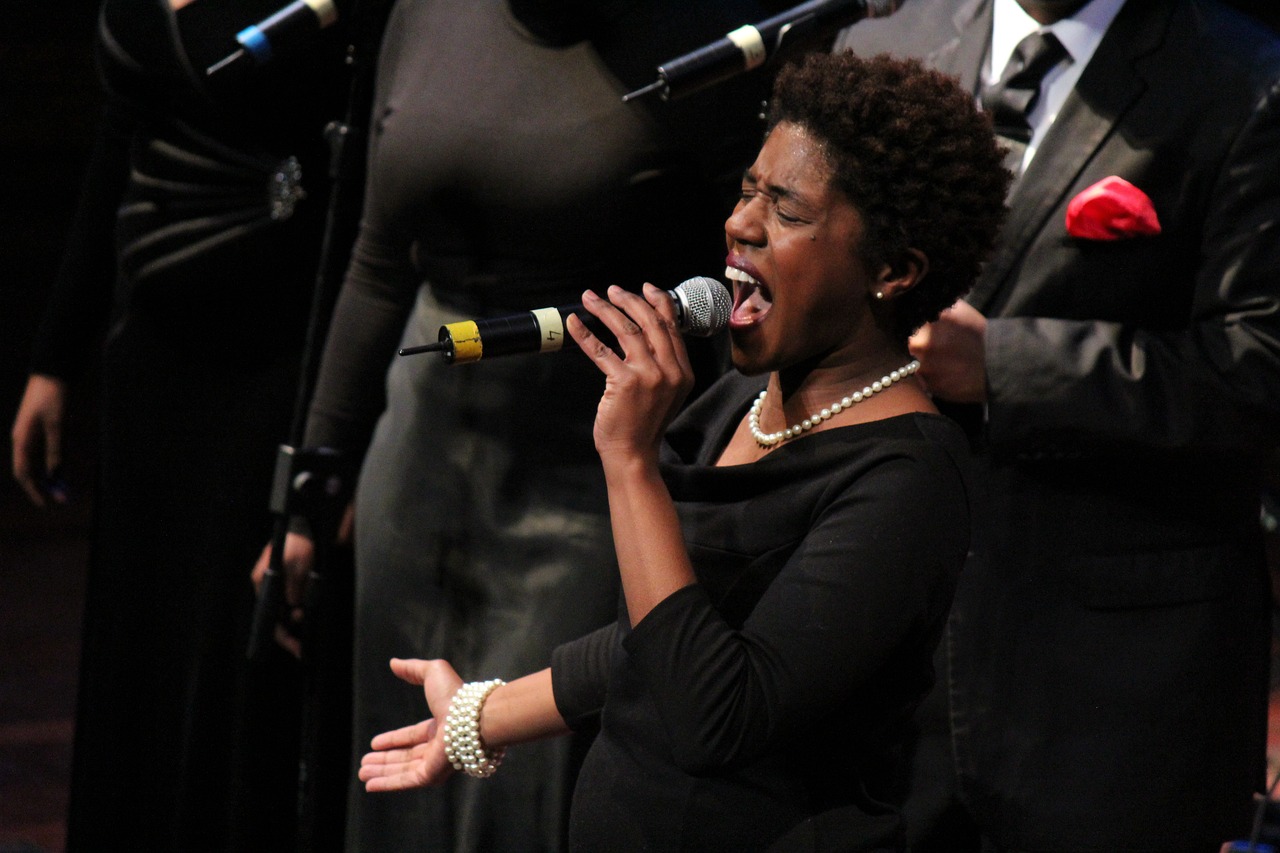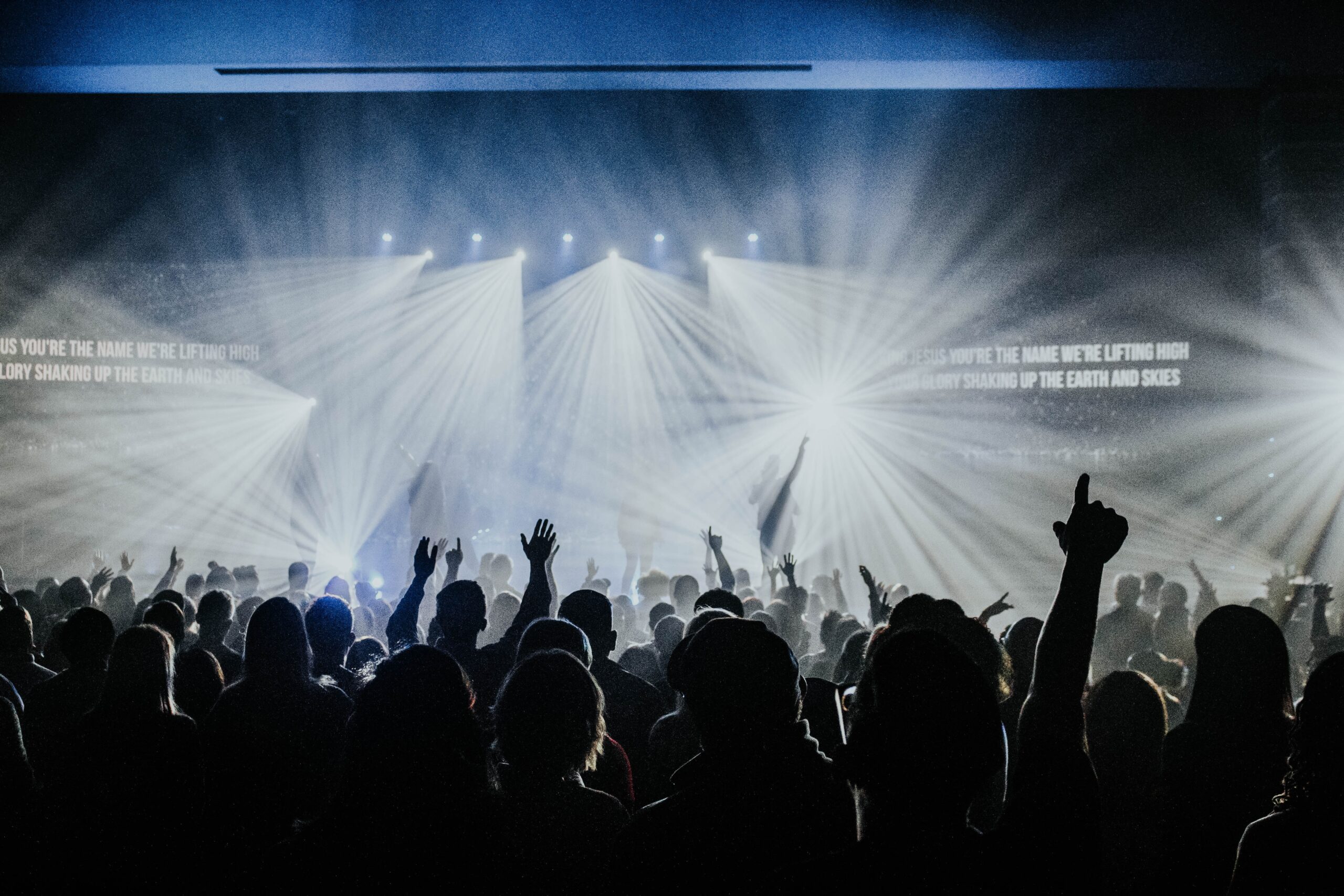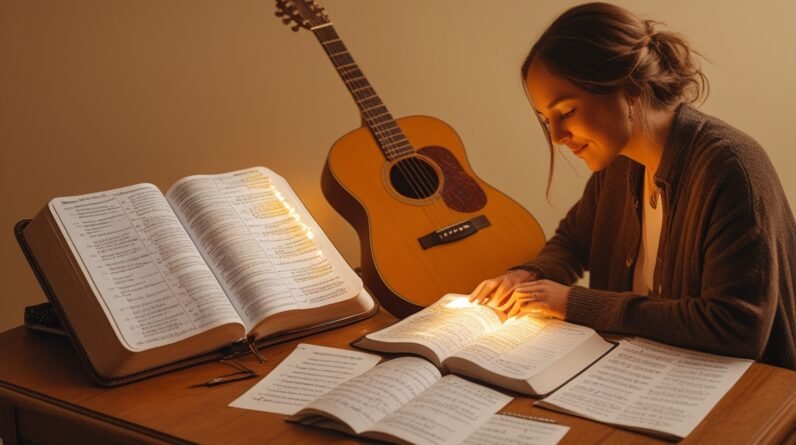Incorporating Scripture into your worship setlist is a wonderful way to enhance the spiritual experience for both you and your congregation. While traditional methods like reading Bible verses before songs are effective, there are also unique ways to incorporate scripture that can bring a fresh and dynamic element to your worship. By seamlessly weaving scripture into song lyrics, creating spoken word interludes, or incorporating visual displays of relevant verses, you can infuse every moment of your worship service with the power and beauty of God’s Word. Discover these creative approaches that will both deepen your connection to Scripture and engage your congregation in a meaningful and transformative worship experience.
Scripture-Based Songs
1.1 Introduction
Incorporating scripture into your worship setlist is a powerful way to engage with God’s word and help your congregation connect with the message of the Bible. One creative way to do this is through scripture-based songs. These are songs that directly quote or paraphrase scripture, using the words of the Bible as lyrics. By singing these songs, you not only encourage praise and worship but also provide an opportunity for the Word of God to penetrate the hearts of those gathered.

1.2 Benefits of Scripture-Based Songs
Using scripture-based songs in your worship setlist offers several benefits. First and foremost, it allows for a seamless integration of scripture into your worship service. As you sing the words of the Bible, you create an atmosphere of reverence and connection to God’s word. This can help individuals to internalize the scriptures more deeply and make them a part of their everyday lives.
Additionally, scripture-based songs can serve as a tool for teaching and memorizing scripture. When we sing the words of the Bible, they become more than just lyrics; they become etched in our hearts and minds. This can be especially beneficial for individuals who struggle with memorizing scripture or are visual learners. Music has a unique way of helping us remember words and concepts, making scripture-based songs an effective tool for both worshippers and leaders alike.
1.3 Examples of Scripture-Based Songs
There are numerous scripture-based songs that you can incorporate into your worship setlist. Here are just a few examples to get you started:
- “Ancient Words” by Michael W. Smith: This powerful song is centered around the importance and authority of God’s word. Drawing from various scriptures, it reminds us of the timeless truths found in the Bible.
- “O Lord, You’re Beautiful” by Keith Green: Based on Psalm 27:4, this song extols the beauty of the Lord and invites worshippers to behold His glory.
- “10,000 Reasons (Bless the Lord)” by Matt Redman: This contemporary worship anthem draws inspiration from Psalm 103, praising God for His goodness and faithfulness.
- “Open the Eyes of My Heart” by Paul Baloche: With lyrics that echo Ephesians 1:18, this song invites worshippers to seek a deeper revelation of God’s love and truth.
- “Great Are You Lord” by All Sons & Daughters: This popular worship song is based on various scriptures, including Psalm 145:3 and Lamentations 3:22-23, exalting God’s greatness and faithfulness.
Remember, the goal is to select songs that accurately convey the message of scripture and resonate with your congregation. There are countless scripture-based songs out there, so explore different genres and styles to find the ones that best align with your worship style and the heart of your community.
Scripture Readings
2.1 Introduction
The reading of scripture plays a vital role in any worship service. It allows the congregation to hear the Word of God directly from the pages of the Bible, creating a sacred space for reflection, conviction, and transformation. While scripture readings are often done in a traditional manner, there are creative ways to incorporate them into your worship setlist that can enhance the overall worship experience and engage the congregation on a deeper level.
2.2 Importance of Scripture Readings
Scripture readings serve as a reminder that the Bible is the ultimate authority and source of truth. They provide an opportunity for individuals to hear God’s word in its entirety and allow for moments of deeper contemplation and meditation. When done effectively, scripture readings can help the congregation focus their hearts and minds on the message being shared, fostering a greater sense of unity and reverence.
Furthermore, scripture readings can serve as a teaching tool, helping individuals to gain a greater understanding of the biblical narrative and its relevance in their lives. By hearing different passages from various books of the Bible, worshippers can develop a more comprehensive view of God’s character, His redemptive plan, and His promises.
2.3 Creative Ways to Incorporate Scripture Readings
While traditional scripture readings can be impactful, there are creative approaches to incorporate them into your worship setlist. Here are a few ideas to explore:
- Dramatic Readings: Instead of having a single individual read the scripture, consider involving multiple people in a dramatic reading. This can bring the text to life and create a more dynamic and engaging experience for the congregation.
- Responsive Readings: Experiment with responsive readings, where the congregation participates in reading or reciting specific portions of scripture. This can be done by dividing the verses or passages and assigning them to different sections of the congregation.
- Musical Readings: Work with your worship team to create musical arrangements for scripture readings. This can involve incorporating melodies, harmonies, or even instrumental accompaniment. By setting the scripture to music, you can enhance the emotional impact and engage the congregation’s hearts.
- Visual Enhancements: Consider incorporating visual elements, such as projected images, videos, or artwork, to accompany the scripture readings. These visuals can help to illustrate the message and create a multisensory experience that resonates with the congregation.
Remember, the key is to make the scripture readings a meaningful and engaging part of your worship setlist. Be intentional in your selection of passages, considering the themes and messages you want to convey. Pray for guidance and let the Holy Spirit lead you in choosing the scriptures that will speak directly to the hearts of your congregation.
Scripture Medleys
3.1 Introduction
Scripture medleys are a creative way to incorporate multiple scripture passages into a single musical composition. These medleys allow for a comprehensive presentation of God’s word and can be used to highlight specific themes or messages. By weaving together different verses and sections of scripture, you create a tapestry of truth that can inspire and edify the congregation.
3.2 Benefits of Scripture Medleys
There are several benefits to incorporating scripture medleys into your worship setlist. First and foremost, medleys provide an opportunity to explore a range of biblical themes and concepts. By combining different passages, you can create a cohesive narrative that tells a specific story or conveys a particular message. This can deepen the congregation’s understanding of the scriptures and help them to make connections between different parts of the Bible.
Additionally, scripture medleys can encourage a more active participation from the congregation. As they hear familiar verses and melodies woven together, they may feel compelled to sing along or reflect on the significance of each passage. This active engagement with the Word of God can enhance the worship experience and foster a sense of unity among the worshippers.
Moreover, scripture medleys can help to reinforce key teachings or emphasize important truths. By repeating certain verses or phrases throughout the medley, you provide an opportunity for the congregation to internalize and meditate on the message being conveyed. This repetition can be particularly impactful for individuals who struggle with scripture memorization or desire a deeper understanding of specific passages.
3.3 Techniques for Creating Scripture Medleys
Creating scripture medleys can be a creative and rewarding endeavor. Here are some techniques to help you craft impactful and meaningful medleys:
- Theme-Based Selection: Choose a specific theme or topic and select scripture passages that relate to it. This could be around God’s love, His faithfulness, or His promises. As you weave these verses together, ensure that the flow and progression of the medley tell a coherent story.
- Harmonic Accompaniment: Experiment with different chords, progressions, and melodies to create a musical arrangement that complements the chosen scripture passages. Consider using existing hymns or worship songs as the foundation for your medley and blending them with the scripture verses.
- Call and Response: Incorporate call-and-response elements into your medley, where one vocalist or a worship leader presents a scripture verse, and the congregation responds with a predetermined refrain or response. This back-and-forth interaction can foster engagement and participation among the worshippers.
- Dynamic Transitions: Pay attention to the transitions between different scripture passages, ensuring they flow smoothly and seamlessly. Consider utilizing musical interludes or instrumental sections to create a cohesive and harmonious medley.
When creating scripture medleys, remember to prioritize authenticity and biblical accuracy. Ensure that the verses are presented in their proper context and that the message being conveyed aligns with the overall worship theme. Seek God’s guidance and let the Holy Spirit inspire and direct your creative process.
Spoken Word Scripture
4.1 Introduction
Spoken word scripture is a powerful way to engage with the Word of God in a unique and compelling manner. It involves the recitation or performance of scripture passages, combining elements of poetry, storytelling, and theatrical presentation. By using spoken word, you can captivate the attention of the congregation, evoke emotions, and emphasize the meaning and significance of the scriptures.
4.2 Importance of Spoken Word Scripture
Spoken word scripture offers a fresh and creative approach to engaging with the scriptures. It allows for a deeper exploration of the nuances, emotions, and narratives found within the Bible. By adding an artistic touch to the delivery of the scripture, you can help individuals connect with the text on a personal and emotional level. This engagement can lead to a deeper understanding and application of the Word of God in their lives.
Moreover, spoken word scripture has the potential to reach individuals who may be less receptive to traditional forms of scripture engagement. The use of rhythm, cadence, and storytelling in spoken word can capture attention and resonate with individuals who have different learning styles or prefer more interactive forms of worship.
4.3 Effective Ways to Include Spoken Word Scripture
Incorporating spoken word scripture into your worship setlist requires careful planning and intentionality. Here are some effective ways to incorporate this creative approach into your worship:
- Solo Performance: Choose an individual from your congregation or worship team who has a talent for spoken word and assign them a scripture passage to perform. Encourage them to infuse their own style and interpretation into the delivery, allowing the passage to resonate with the audience on a deeper level.
- Group Collaboration: If you have multiple individuals in your congregation who are interested in spoken word, consider creating a collaborative performance. Assign different parts of a scripture passage to different individuals or groups, and have them take turns performing their assigned sections. This can create a dynamic and engaging presentation that highlights the diversity and unity of the body of Christ.
- Interludes: Incorporate spoken word interludes between songs or as transitions during your worship setlist. These interludes can serve as a moment of reflection, allowing the congregation to meditate on specific scripture passages or themes. Consider using spoken word poetry that relates to the overarching message or theme of the worship service.
- Scripture Narration: Use spoken word scripture as a narration for dramatic presentations or skits that bring the biblical narratives to life. This can create a powerful visual and auditory experience, immersing the congregation in the story and allowing them to connect with the characters and messages of the scriptures.
When incorporating spoken word scripture, explore different delivery styles and techniques. Experiment with rhythm, tone, and pacing to create a compelling and impactful presentation. Remember, the goal is to breathe life into the scriptures and facilitate a deeper encounter with God’s word.
Scripture Projections

This image is property of images.unsplash.com.
5.1 Introduction
In an increasingly digital age, scripture projections have become a popular and practical way to incorporate the Word of God into worship services. By displaying scripture passages on screens or projections, you can ensure that everyone in the congregation can easily follow along and engage with the scriptures. With the right approach and design, scripture projections can enhance the worship experience and create a visually pleasing and immersive atmosphere.
5.2 Advantages of Scripture Projections
Using scripture projections in your worship setlist offers several advantages. First and foremost, it provides an inclusive experience for everyone in the congregation. Whether they are sitting near the front or in the back, children or adults, individuals with visual impairments or those who may not have brought a physical copy of the Bible, scripture projections ensure that everyone has easy access to the Word of God.
Additionally, scripture projections can enhance the visual aesthetics of your worship environment. By using attractive fonts, backgrounds, and layouts, you can create a visually appealing display that complements the overall atmosphere of worship. This visual enhancement helps to engage the senses and create a more immersive experience for the congregation.
Another advantage of scripture projections is the flexibility they offer. Unlike printed materials, projections can be easily edited and updated. This allows you to respond to last-minute changes, incorporate spontaneous scripture readings, or adjust the font size and formatting based on the needs of the congregation.
5.3 Practical Tips for Using Scripture Projections
To successfully incorporate scripture projections into your worship setlist, consider the following practical tips:
- Choose Appropriate Fonts and Colors: Select fonts that are easy to read and visually pleasing. Consider using contrasting colors for the background and text to ensure that the words are clear and legible, even from a distance.
- Clarity and Timing: Ensure that the scripture passages are displayed for an appropriate amount of time, allowing the congregation enough time to read and reflect on each verse. Avoid overcrowding the screen with too much text and prioritize clear and concise formatting.
- Screen Placement and Size: Position the screens or projections in a way that allows everyone in the congregation to easily view the text. Consider the size and placement of the screens based on the layout and seating arrangement of the worship space.
- Interactive Opportunities: Incorporate interactive elements into the scripture projections, such as encouraging the congregation to read along or asking individuals to provide personal reflections or responses. This fosters active engagement and participation.
- Variety and Visual Enhancements: Experiment with different backgrounds, transitions, and visual elements to create a visually engaging display. However, be mindful not to overshadow or distract from the primary focus on the scripture itself.
Remember, the purpose of scripture projections is to enhance the worship experience and facilitate engagement with the Word of God. Strive for clarity, simplicity, and creativity in your approach to ensure that the projections enrich the overall worship setting and do not become a distraction.
Scripture Artwork
6.1 Introduction
The visual arts have long been used to convey spiritual and religious values. In a worship setting, incorporating scripture artwork can serve as a powerful visual representation of God’s word and create a visually stimulating environment. By combining the written word with artistic expression, you can engage the congregation’s senses and foster a deeper connection with the scriptures.
6.2 Significance of Scripture Artwork
Using scripture artwork in your worship setlist can create a visual focal point and serve as a reminder of the truth and beauty of God’s word. It enables individuals to engage with the scriptures on a visual and emotional level, evoking emotions, and highlighting the deeper meaning behind the written text.
Additionally, scripture artwork can bring the scriptures to life, making them more relatable and memorable. Visual representations can help worshippers form a mental image of the scripture passage, aiding in comprehension and interpretation. Artwork also has the power to evoke emotions and create a more profound emotional connection to the scriptures.
Moreover, scripture artwork can serve as a conversation starter and a tool for reflection and meditation. The imagery used can prompt individuals to explore the symbolism, themes, and messages found within the scriptures. It can also provide a source of inspiration and encouragement, reminding the congregation of the promises and truth contained in God’s word.
6.3 Ideas for Incorporating Scripture Artwork
There are various ways to incorporate scripture artwork into your worship setlist. Here are a few ideas to inspire you:
- Visual Displays: Create visually striking displays using scripture verses or passages. This can be done through large banners, posters, or projections. Consider using visually appealing fonts, colors, and images that capture the essence of the scripture being displayed.
- Live Art: Invite a visual artist to create artwork live during the worship service, inspired by the themes or scripture passages being presented. This can be done through painting, drawing, or other artistic mediums. This live art can provide a visually captivating focal point and serve as a reminder of the presence and creativity of God.
- Digital Presentations: Utilize digital platforms or screens to showcase slideshow presentations of scripture artwork. This can involve curated collections of artwork from various artists or custom designs specifically created for your worship service. The visual transitions and movement can create a dynamic and engaging experience for the congregation.
- Interactive Art Stations: Set up art stations or areas where individuals can create their own scripture-inspired artwork. Provide art supplies and prompt individuals to reflect on specific scripture passages or themes. This interactive approach encourages personal engagement and allows individuals to express their unique interpretations and responses to the scriptures.
When incorporating scripture artwork, ensure that the visuals are intentional and aligned with the underlying message and theme of the worship service. Seek artists who have a passion for scripture and a sensitivity to its truths. By inviting individuals to engage with the scriptures through art, you provide a multi-sensory worship experience that deepens their understanding and connection with God’s word.
Scripture Dance

This image is property of images.unsplash.com.
7.1 Introduction
Dance has long been used as a form of worship and expression in various cultures and traditions. Incorporating scripture dance into your worship setlist can add a dynamic and physical element to the worship experience, enabling individuals to engage with the scriptures through movement and embodiment. It offers a unique and powerful way to convey the message of the scriptures and create a visually captivating worship setting.
7.2 Benefits of Scripture Dance
Scripture dance provides numerous benefits, both for the individuals participating in the dance and the congregation witnessing it. First and foremost, it allows worshippers to physically embody the scriptures, expressing their praise and devotion through movement. This embodiment can deepen their connection to the scriptures and help them internalize the message on a deeper level.
Additionally, scripture dance can serve as a form of storytelling. By using gestures, poses, and choreography, dancers can visually represent the narrative and themes contained in the scriptures. This visual representation can help the congregation to understand and connect with the meaning and message of the scriptures in a profound and memorable way.
Furthermore, scripture dance can create a sense of unity and community among the worshippers. When individuals come together to engage in synchronized movements based on scripture passages, it fosters a sense of collective worship and fellowship. The congregation as a whole can be moved by the beauty and artistry of the dance, enhancing their overall worship experience.
7.3 Techniques for Integrating Scripture Dance
Integrating scripture dance into your worship setlist requires careful planning and coordination. Here are some techniques to help you effectively incorporate this form of worship:
- Choreographed Dances: Work with dancers who have a passion for scripture and a creative approach to movement. Choose specific scripture passages or themes, and develop choreography that visually represents the message. Ensure that the movements are engaging, accessible, and align with the flow and rhythm of the accompanying music.
- Symbolic Gestures: Incorporate symbolic gestures into the dance routine. These gestures can represent specific concepts or themes found within the scripture passages. For example, lifting hands to represent surrender or kneeling to represent humility. These symbolic gestures can add depth and layers of meaning to the dance.
- Group Participation: Encourage group participation in scripture dance. This can involve inviting individuals from the congregation to join in specific sections of the dance or creating opportunities for the entire congregation to participate in simple choreographed movements.
- Dance Interpretations: Allow dancers the freedom to interpret and express the scriptures through movement. Provide them with scriptural themes or passages and allow them to create their own movements or improvisational dance sequences. This personal interpretation can add a unique and authentic element to the worship experience.
- Multisensory Elements: Consider incorporating other multisensory elements into the scripture dance, such as spoken word, live music, or visual projections. These additional elements can enhance the overall worship experience and provide a multi-dimensional encounter with the scriptures.
When incorporating scripture dance, it is important to ensure that the choreography and movements do not distract from the overall focus on God’s word. Seek balance between artistic expression and reverence for the scriptures. By integrating dance into your worship setlist, you create a memorable and impactful experience that engages both the body and the spirit.
Scripture Memorization
8.1 Introduction
Scripture memorization is a powerful discipline that allows individuals to internalize and meditate on God’s word. By incorporating scripture memorization into your worship setlist, you provide an opportunity for the congregation to actively engage with the scriptures and make them a part of their lives beyond the worship service. Memorization not only allows individuals to carry the Word of God in their hearts but also equips them for moments of encouragement, conviction, and sharing with others.
8.2 Importance of Scripture Memorization
Scripture memorization is vital for the spiritual growth and transformation of believers. It allows individuals to hide God’s word in their hearts, as emphasized in Psalm 119:11. When the scriptures are memorized, they become readily available for meditation, comfort, and guidance in times of need.
Memorization also enables individuals to engage in meaningful conversations and share the truth of God’s word with others. When verses and passages are committed to memory, believers can readily draw upon them during discussions, discipleship, or evangelism, providing a firm foundation for their faith.
Additionally, scripture memorization enhances spiritual discipline and fosters a deeper relationship with God. As individuals commit themselves to memorizing and meditating on scripture, they invite the Holy Spirit to speak to them through the words of the Bible. This discipline cultivates a greater sensitivity and receptivity to God’s voice, allowing for a transformative encounter with the living word.
8.3 Strategies for Encouraging Scripture Memorization
Encouraging scripture memorization within your worship setlist requires intentional planning and strategic implementation. Here are some strategies to help you foster a culture of scripture memorization within your congregation:
- Scripture Memory Verses: Select specific verses or passages for memorization. These can be tied to the overarching theme of the worship service or draw from topics that are relevant to the lives of the worshippers. Provide printed copies of the verses or display them on screens to facilitate the memorization process.
- Recitation and Repetition: Incorporate times of recitation and repetition during the worship service, where the congregation is encouraged to recite and memorize specific verses together. This can be done during transitions or as an interlude between songs.
- Scripture Memorization Challenges: Organize scripture memorization challenges within your congregation or worship team. Set specific goals and provide incentives or rewards for those who successfully memorize the targeted verses. This can create a sense of friendly competition and accountability that motivates individuals to engage in scripture memorization.
- Scripture Songs: Integrate scripture-based songs into your worship setlist that emphasize memorization. These songs often use repetitive melodies and simple lyrics that make it easier for individuals to memorize and internalize scripture.
- Memorization Resources: Provide resources and tools to assist individuals in their scripture memorization journey. This can include scripture memory cards, mobile apps, or recommended study materials that provide guidance and techniques for effective memorization.
Remember, scripture memorization is a lifelong discipline that requires consistency and perseverance. Encourage individuals to set achievable goals and celebrate their progress, whether it be memorizing a single verse or an entire chapter. By incorporating scripture memorization into your worship setlist, you empower the congregation to hide the word in their hearts and allow it to transform their lives.
Scripture Testimonies
9.1 Introduction
Scripture testimonies are personal accounts or narratives that highlight the impact and relevance of specific scripture passages in individuals’ lives. By sharing these testimonies within your worship setlist, you provide an opportunity for the congregation to witness the transformative power of God’s word and experience firsthand the real-life application of the scriptures.
9.2 Significance of Scripture Testimonies
Scripture testimonies serve as a catalytic reminder that the Word of God is alive and active, capable of bringing about lasting change and profound transformation. When individuals share their testimonies, they provide tangible evidence of the power and relevance of specific scripture passages. These testimonies encourage and inspire others, fostering a sense of unity, hope, and encouragement among the congregation.
Furthermore, scripture testimonies can help to dismantle skepticism and doubt, showcasing that the truths found in the scriptures are not mere words on a page but a living and applicable message. As individuals share how specific verses or passages have impacted their lives, it builds credibility and authenticity, reinforcing the belief that scripture is indeed relevant and life-changing.
Moreover, scripture testimonies offer a unique opportunity for personal and communal reflection. As individuals listen to the experiences and stories of others, they may identify parallels or connections between their own lives and the scriptures being shared. This reflection can lead to deeper introspection, self-discovery, and a renewed commitment to engage with God’s word.
9.3 Examples of Scripture Testimonies
Here are some examples of scripture testimonies that can be shared within your worship setlist:
- Overcoming Fear: An individual shares how they found comfort and courage in Psalm 23 during a season of uncertainty and fear. The testimony highlights how the scripture passage became a source of strength and assurance, transforming their perspective and instilling confidence in God’s faithfulness.
- Finding Peace in the Midst of Chaos: Someone shares their experience of discovering Philippians 4:6-7 during a particularly challenging time in their life. They testify to the peace that surpassed understanding, which permeated their heart and mind as they trusted in God’s promises.
- Restoration and Healing: An individual shares how they experienced healing and restoration after a period of brokenness and despair. They attribute their transformation to the truth found in Isaiah 61:1-3, which speaks of God’s ability to bind up the brokenhearted and provide a garment of praise instead of a spirit of despair.
- Guidance and Direction: Someone testifies to the way Proverbs 3:5-6 guided them in making important decisions and seeking God’s will in their life. They share how surrendering to God’s wisdom and acknowledging His sovereignty provided clarity and peace amidst uncertainty.
- Provision and Faithfulness: An individual shares their journey of trust and reliance on God’s provision, drawing from passages such as Matthew 6:25-34 and Psalm 23. They testify to God’s faithfulness, recounting the ways in which He steadfastly provided for their needs.
When sharing scripture testimonies, encourage individuals to be authentic, vulnerable, and concise. Emphasize the relevance and application of the scriptures being shared, making it clear that the testimonies are not meant to simply entertain but to edify and inspire the congregation.
Scripture Reflections
10.1 Introduction
Scripture reflections are intentional moments of contemplation, meditation, and response to specific scripture passages. By incorporating scripture reflections into your worship setlist, you provide a structured time for the congregation to engage with the scriptures on a personal and introspective level. These moments of reflection can deepen individual understanding, encourage spiritual growth, and foster a deeper connection with God’s word.
10.2 Benefits of Scripture Reflections
Scripture reflections offer numerous benefits for individuals within the congregation. First and foremost, they enable individuals to internalize and personalize the scriptures. Rather than passively listening or reading, scripture reflections prompt individuals to actively engage with the scriptures, considering how they apply to their own lives and circumstances. This active engagement allows individuals to move beyond surface-level understanding to a more meaningful and transformative encounter with God’s word.
Additionally, scripture reflections create space for individual and communal introspection. As individuals reflect on specific passages or themes, they are invited to consider their own beliefs, behaviors, and attitudes in light of the scriptures. This introspection promotes self-awareness, conviction, and a deeper desire for alignment with God’s truth and character.
Furthermore, scripture reflections nurture a sense of unity and community within the congregation. As individuals participate in guided reflection, they become aware that they are engaging in a shared experience. This communal reflection fosters empathy, compassion, and a shared commitment to growth and transformation.
10.3 Ways to Incorporate Scripture Reflections
There are various ways to incorporate scripture reflections into your worship setlist. Here are a few examples to consider:
- Guided Questions: Provide guided questions or prompts related to specific scripture passages. Encourage individuals to reflect on these questions silently or in small groups. This can be done during moments of worship preparation, interludes between songs, or as part of a guided meditation.
- Written Reflections: Provide printed reflection guides or response cards that individuals can fill out during the worship service. Encourage them to jot down their thoughts, prayers, or personal reflections related to the scripture passages being shared. These written reflections can be collected or kept as a personal keepsake.
- Silent Meditation: Incorporate moments of silent meditation where the congregation is encouraged to contemplate and meditate on specific scripture passages. Provide them with visualization prompts or quiet instrumental music to create a peaceful and focused environment.
- Interactive Stations: Set up interactive reflection stations where individuals can engage in hands-on activities related to specific scripture passages. For example, providing art supplies for individuals to create visual representations of the scripture or prayer journals for individuals to write out their reflections and prayers.
Remember, the goal of scripture reflections is to provide intentional moments for individuals to engage with God’s word and respond to His truth in a personal and introspective way. Encourage individuals to be open, vulnerable, and receptive to the prompting of the Holy Spirit during these times of reflection.
Incorporating scripture into your worship setlist is an intentional and powerful way to create an environment where individuals can encounter God’s word and experience His presence. Whether through scripture-based songs, creative readings, or visual elements, each approach offers a unique opportunity to engage with and internalize the scriptures. By incorporating these various techniques into your worship setlist, you can create a transformative and multi-sensory worship experience that deepens the congregation’s connection with God’s word. So go ahead, let the scriptures come alive in your worship, and see how it enriches your worship community.







